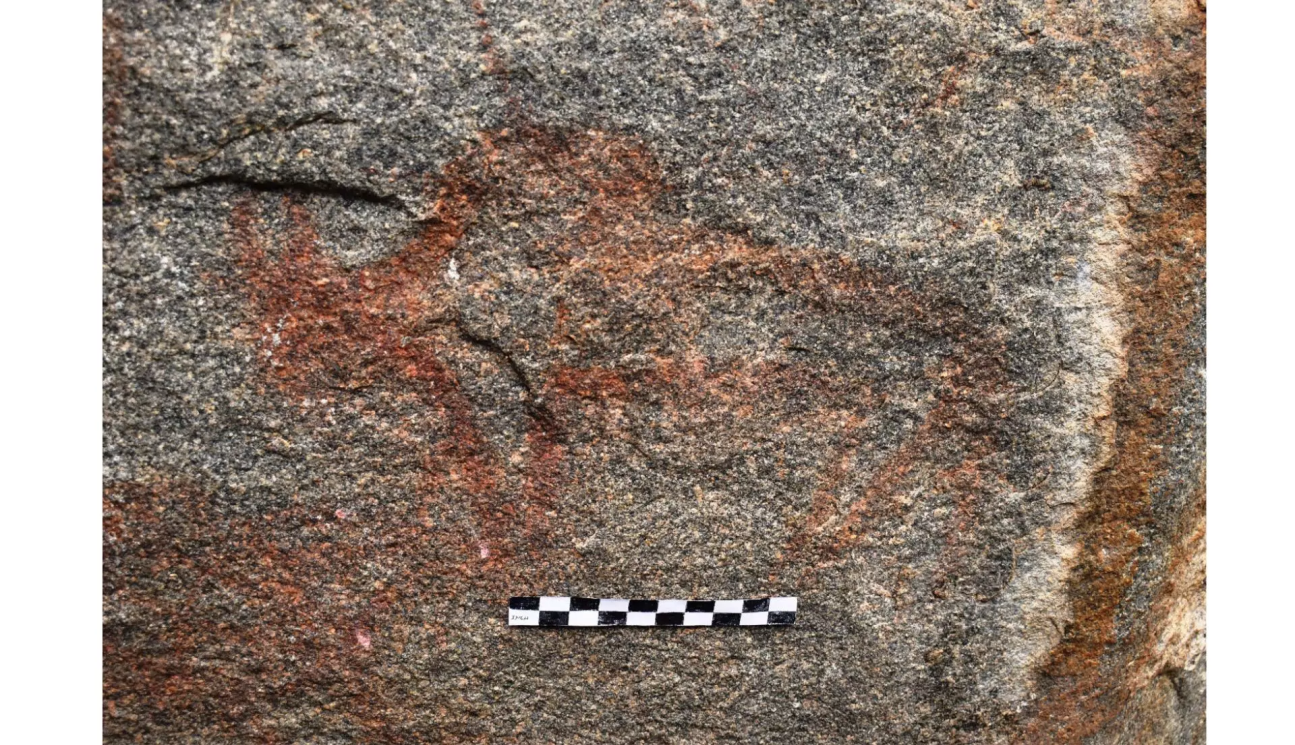





Copyright infringement not intended
Picture Courtesy: https://www.deccanchronicle.com/news/ancient-rock-paintings-discovered-near-pampa-lake-896828
Context: Karnataka State Department of Archaeology Museums and Heritage uncovered 2,500-year-old rock shelter paintings near Pampa Lake.
Ancient Rock Paintings Unearthed near Pampa Lake, Hampi
|
Hampi World Heritage Sites ●Hampi, also known as the Group of Monuments at Hampi, is a UNESCO World Heritage Site in east-central Karnataka. ●It predates the Vijayanagara Empire and is mentioned in Hinduism as Pampa Devi Tirtha Kshetra. ●Hampi was the capital of the Vijayanagara Empire from 1336 to 1565 and was a fortified city. ●Chronicles from Persian and European travellers, particularly the Portuguese, describe Hampi as a prosperous, wealthy, and grand city near the Tungabhadra River. ●By 1500 CE, Hampi-Vijayanagara was the world's second-largest city and India's richest. However, the Vijayanagara Empire was defeated by a coalition of Muslim sultanates, and its capital was conquered, pillaged, and destroyed by Sultanate armies in 1565. ●Hampi's ruins span over 4,100 hectares and are described by UNESCO as an "austere, grandiose site" of over 1,600 surviving remains of the last great Hindu kingdom in South India. |
Pampa Lake
Pamba River
Source:
|
PRACTICE QUESTION Q. Hampi's urban planning and infrastructure were quite advanced for its time. Which features might you encounter there? 1. Canals and reservoirs for water supply and irrigation. 2. Royal enclosures with palaces, audience halls, and administrative buildings. 3. Extensive marketplaces and bazaars for trade and commerce. How many of the above statements are incorrect? A) Only one B) Only two C) All three D) None Answer: D |











© 2025 iasgyan. All right reserved